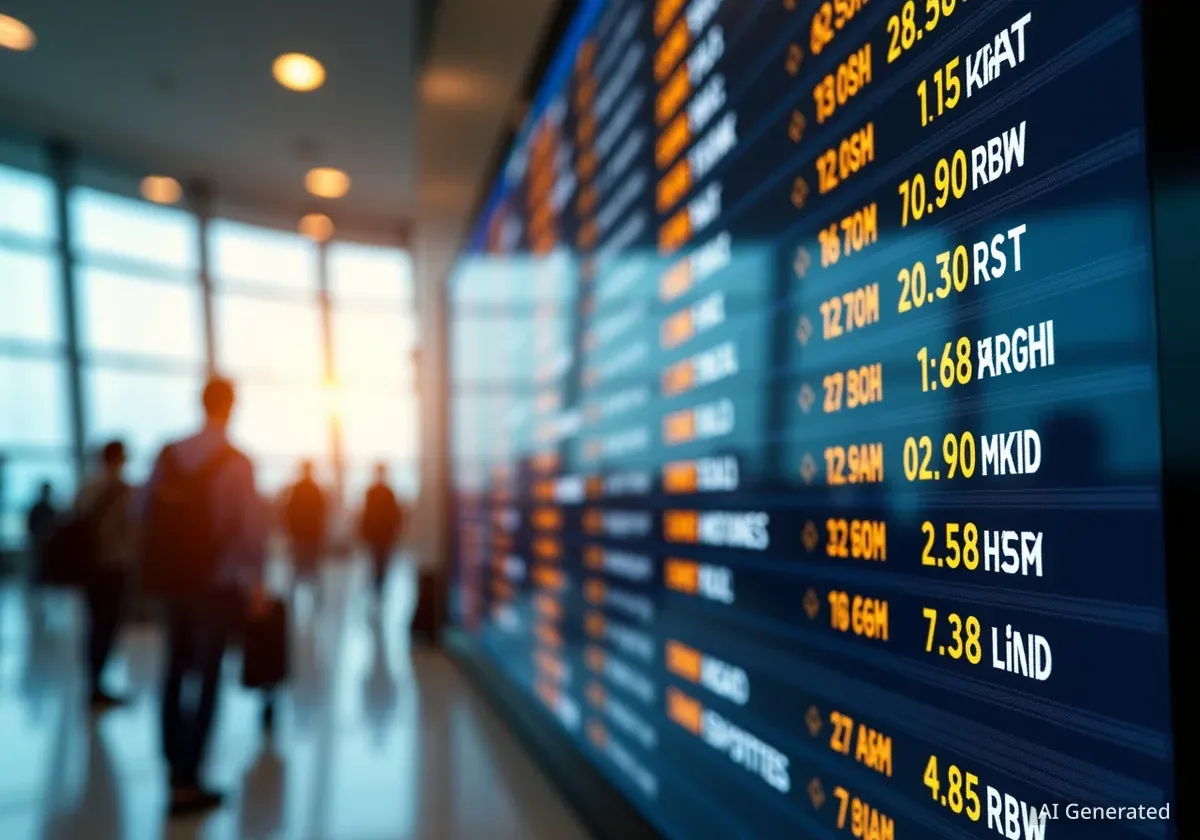Finding an affordable cruise vacation often depends less on the destination and more on when you choose to book and sail. According to travel experts, strategic timing can lead to significant savings on fares, with prices fluctuating based on seasonality, booking windows, and annual sales events.
Understanding these patterns allows travelers to secure better deals and avoid peak-season pricing. Factors such as school schedules, holiday periods, and industry-specific promotions all play a crucial role in determining the final cost of a cruise.
Key Takeaways
- The most affordable times to take a cruise are during the off-season, typically when children are in school, such as from September to mid-November and from January to March.
- Booking a cruise one to two years in advance generally results in lower prices and a better selection of cabins, contrary to the popular myth of last-minute deals.
- Annual promotions like 'Wave Season' (January-March) offer valuable discounts and bonuses, while Black Friday sales often focus on add-ons rather than base fares.
- For specific destinations like Alaska or Europe, traveling during the 'shoulder seasons' at the beginning or end of the main tourist period can yield substantial savings.
Understanding Cruise Price Fluctuations
The price of a cruise is not static. It changes based on a variety of factors, including the cruise line, the type of cabin, and most importantly, the date of departure. High-demand periods will always command higher prices.
"Summertime is going to be the most expensive, holidays (are) going to be the most expensive,” RacQuelle Major-Holland, owner of Major Adventures Travel Agency, explained in an interview. This means that if your travel dates are flexible, you have a significant opportunity to save money by avoiding these popular times.
Beyond the sailing date, the date you make your reservation is equally important. A strategic approach to booking can be just as impactful as choosing an off-season sailing.
The Best Time of Year to Sail for Lower Fares
For travelers seeking the lowest possible prices, the calendar is their best tool. The key is to identify periods when demand is naturally lower, which often aligns with the academic year.
General Off-Season Travel
The most budget-friendly periods for cruising generally fall when schools are in session. According to Major-Holland, this creates two primary windows for savings.
Travelers can often find lower prices on sailings from mid-September until just before the Thanksgiving holiday. Another prime period for deals is between January and March, before the spring break rush begins. During these times, ships are less crowded, and both cruise lines and airlines may offer more competitive pricing.
What is Shoulder Season?
Shoulder season refers to the travel period between the peak and off-peak seasons. For many destinations, this means late spring and early autumn. Traveling during this time often provides a balance of good weather, fewer crowds, and lower prices compared to the high season.
Destination-Specific Windows
While the general off-season rule applies broadly, some destinations have their own unique seasonal patterns that savvy travelers can use to their advantage.
For Alaska cruises, the season runs from mid-April through September. The most affordable rates are typically found at the very beginning and end of this window. However, there can be trade-offs. "The challenge with that, though, is sometimes you may not see as much wildlife, or it may be a different experience than if you go at peak time, which would be like that June, July time,” said Major-Holland.
Similarly, European cruises are technically available year-round, but the shoulder season months of April, May, September, and October offer the best value. During these months, the weather is often pleasant, and major tourist sites are less congested. Major-Holland added, "So you'll see, not only the cruise cost … being cheaper, a lot of times the flight cost is cheaper as well.” A potential downside is that some local tour operators may have reduced hours or be closed during these off-peak times.
When to Book Your Cruise for Maximum Savings
Securing a low fare isn't just about when you sail; it's also about when you buy. The timing of your booking can have a major impact on the price you pay and the cabin you get.
The Advantage of Booking Early
One of the most persistent myths in travel is that waiting until the last minute yields the best deals. For cruises, the opposite is often true.
"Generally, the pricing is cheaper the earlier you book. There's a huge misconception out there that if you wait for last-minute deals, you're going to get the best deal. That's not always the case.”– RacQuelle Major-Holland, Major Adventures Travel Agency
Major-Holland recommends booking at least one to two years in advance. This strategy not only locks in a lower price but also provides a much better selection of cabins. This is especially important for travelers needing specific accommodations, such as accessible staterooms or connecting rooms for families.
Furthermore, booking early provides a form of price protection. If the cruise fare drops before your final payment is due, most cruise lines will adjust your price to the lower rate upon request.
Early Booking Benefits
- Lower Fares: Prices tend to rise as the departure date approaches and the ship fills up.
- Better Cabin Choice: Secure your preferred location, category, or specific stateroom.
- Price Drop Protection: Most lines will honor a lower fare if it becomes available before the final payment deadline.
Leveraging Annual Sales for Extra Value
In addition to strategic booking and sailing times, the cruise industry has specific promotional periods that offer another layer of potential savings and added perks.
What is Wave Season?
Wave Season is the cruise industry's biggest sales period, typically running from January through March. During these months, cruise lines aggressively compete for bookings for the year ahead.
While you can find fare discounts, Wave Season is particularly known for its added bonuses. "The cruise lines offer those types of promotions off-season, but it's more common during that wave season,” Major-Holland noted. These promotions often include valuable extras such as:
- Onboard spending credit
- Free or discounted drink packages
- Pre-paid gratuities
- Cabin upgrades
These bonuses can add hundreds of dollars in value to a booking, making it a prime time for travelers to reserve their next voyage.
Black Friday Deals Explained
While Black Friday is a major event for retail, its impact on the cruise industry is slightly different. Travelers waiting for massive fare reductions on this day may be disappointed.
According to Major-Holland's experience, cruise lines typically use Black Friday to offer discounts on add-ons rather than the cruise fare itself. You are more likely to find deals on drink packages, shore excursions, Wi-Fi, and specialty dining.
"Some people wait thinking cruise prices will go down during Black Friday, and that is not true,” she clarified. While these ancillary savings are valuable, the best time to secure a low base fare remains during the early booking window or Wave Season.





